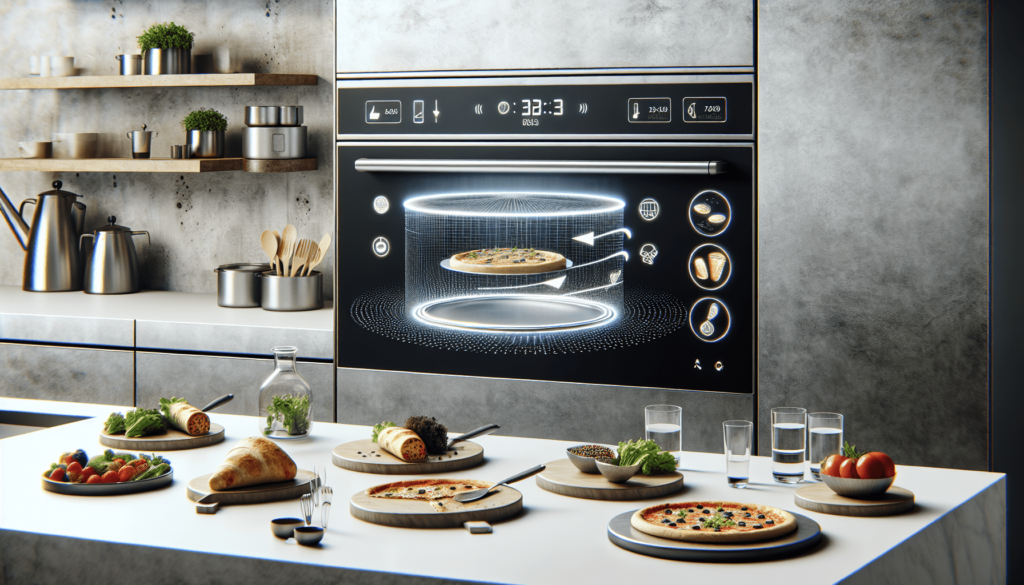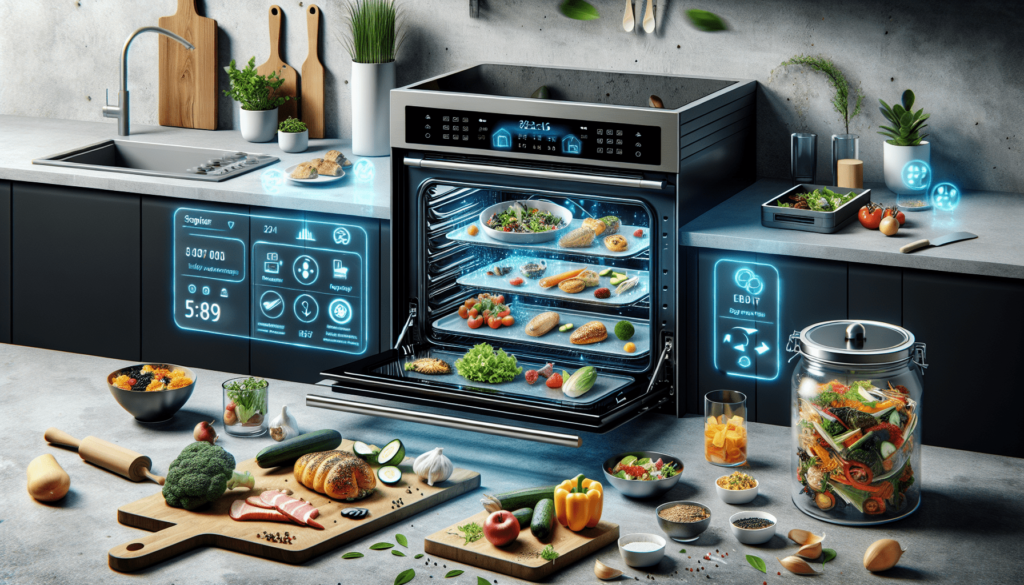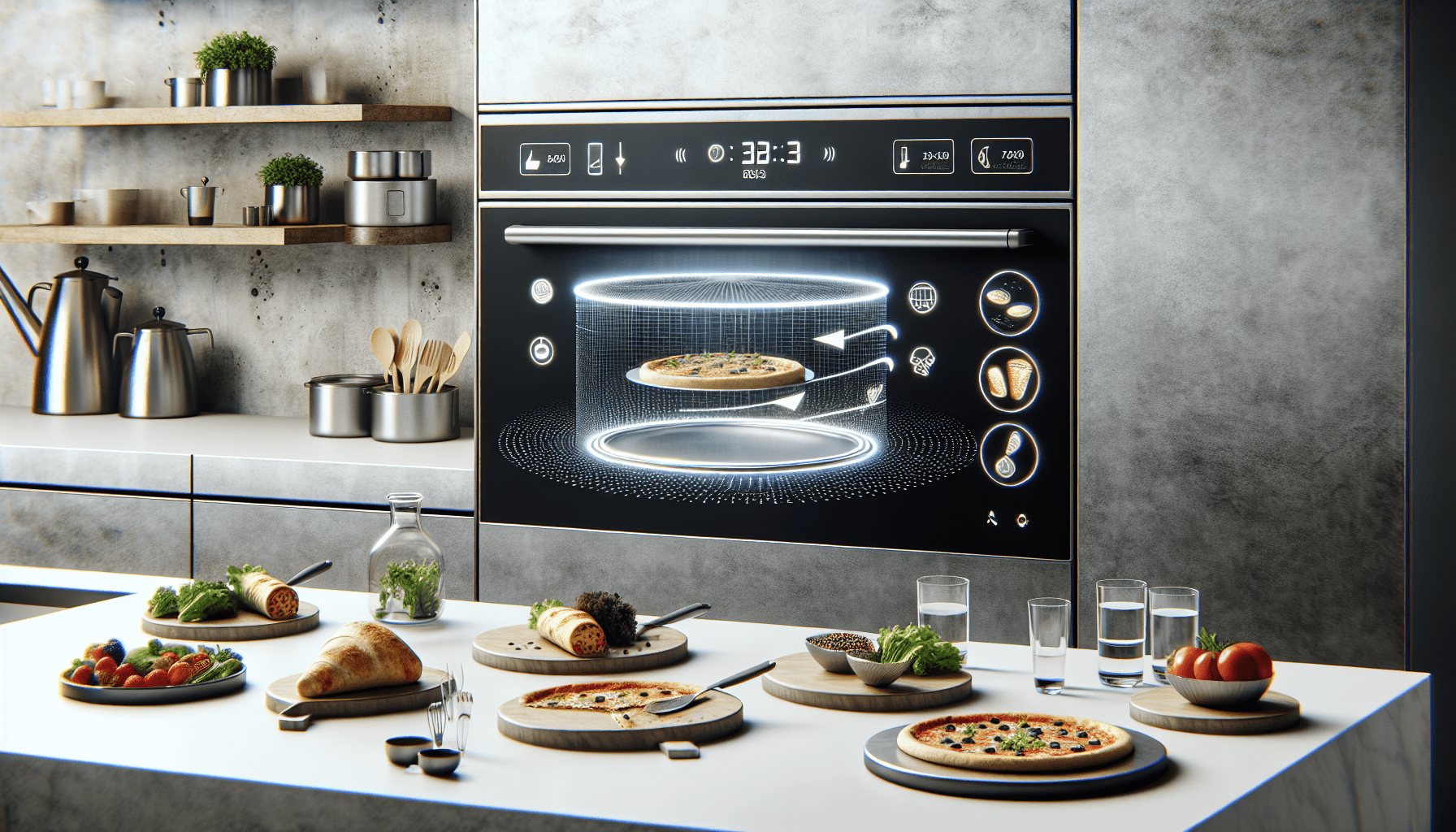Are you tired of wasting leftovers and constantly searching for new recipe ideas? Look no further, because your smart oven is about to revolutionize your cooking game. With its advanced features and technology, you can effortlessly transform those boring leftovers into healthy and mouthwatering meals. Say goodbye to mundane meals and hello to an exciting culinary adventure. Let your smart oven do all the work as it brings new life to your leftovers, turning them into delicious creations that will have your taste buds dancing with joy. Get ready to experience the magic of transforming leftovers into healthy and tasty meals like never before.

Understanding the Concept of Smart Ovens
Definition and Features
Smart ovens are innovative kitchen appliances that utilize advanced technology to make cooking more convenient and efficient. These appliances are equipped with built-in sensors and intelligent programming capabilities that allow them to automatically adjust cooking settings, temperatures, and timings based on the type of food being prepared. Additionally, smart ovens can be connected to home networks through Wi-Fi, enabling users to control and monitor the cooking process remotely using a smartphone or tablet. With their user-friendly interfaces and comprehensive features, smart ovens have revolutionized the way we cook and use leftovers.
Benefits of Using a Smart Oven
Using a smart oven offers numerous benefits for home cooks, particularly when it comes to transforming leftovers into healthy and tasty meals. One of the key advantages of smart ovens is their ability to ensure precise and consistent cooking temperatures, which helps retain the nutritional value and taste of leftover food. Smart ovens also provide a wide range of cooking functions, such as convection, broiling, and steaming, which can be tailored to specific ingredients and dishes. Furthermore, their pre-set programs and convenient automation features simplify the cooking process, allowing you to effortlessly convert your leftovers into delicious meals without the guesswork.
The Problem of Leftovers
Food Waste Statistics
Food waste is a significant global issue, with approximately one-third of all food produced for human consumption being wasted every year. In the United States alone, it is estimated that 30-40% of the food supply is wasted, equating to 133 billion pounds and $161 billion worth of food annually. Leftovers contribute significantly to this problem, as they often end up being discarded due to lack of knowledge or creativity in repurposing them. However, with the help of a smart oven, you can effectively minimize food waste by transforming your leftovers into delicious and satisfying meals.
Challenges in Utilizing Leftovers
One of the primary challenges home cooks face when it comes to utilizing leftovers is finding innovative ways to repurpose them without compromising taste, texture, or nutritional value. Many people are hesitant to consume leftovers because they fear they may become bland, dry, or unappetizing when reheated. Additionally, the lack of variety and creativity in leftover meal ideas can lead to a monotonous dining experience. However, by leveraging the advanced cooking functions and features of a smart oven, these challenges can be overcome, and leftovers can be transformed into exciting and nutritious dishes.
How Smart Ovens Can Help
Advanced Cooking Functions
Smart ovens are equipped with advanced cooking functions that can enhance the taste and texture of leftovers. For example, the convection mode in a smart oven circulates hot air evenly around the food, resulting in crisp, golden-brown exteriors and moist interiors. This function is particularly useful when reheating or rejuvenating leftover fried foods or baked goods. The broil function, on the other hand, provides intense direct heat from the top elements, perfect for melting cheese or quickly heating up leftover pizzas. Lastly, the steam function can help retain the moisture in leftovers, ensuring they do not become dry or lose their juiciness during the reheating process.
Convenient Pre-sets and Programs
Another advantage of smart ovens is their pre-set programs and convenient automation features. These programs are specifically designed for different types of food, allowing you to effortlessly transform your leftovers into new meals. For example, if you have leftover roast chicken, you can use the “roast chicken” program, which automatically adjusts the temperature and cooking time for optimal results. Similarly, if you want to transform your leftover vegetables into a delicious stir-fry, you can select the “stir-fry” program, which adjusts the heat and cooking time accordingly. These pre-set programs take the guesswork out of reheating leftovers and ensure consistent and flavorful results every time.
Best Practices for Transforming Leftovers
Safety Guidelines
When it comes to transforming leftovers, it is essential to prioritize food safety. Leftovers should be stored properly in airtight containers and refrigerated promptly to prevent bacterial growth. It is recommended to consume leftovers within three to four days to ensure their quality and freshness. When reheating leftovers in a smart oven, ensure that the internal temperature reaches a minimum of 165°F (74°C) to kill any potential bacteria. Always follow the manufacturer’s instructions and guidelines for safe operation of the smart oven.
Storage and Labeling
To maximize the efficiency of using leftovers, it is crucial to store them in a well-organized manner and label them with the date of preparation. This practice helps you easily identify the older leftovers that need to be consumed first, reducing the chances of them going to waste. Consider investing in airtight containers or reusable silicone bags that prevent air from entering, keeping the leftovers fresh for a longer period. Additionally, proper labeling prevents any confusion and allows you to quickly identify the contents and their expiration dates.
Utilizing Different Food Groups
To create healthy and well-balanced meals from leftovers, it is important to utilize different food groups. Incorporate a mix of proteins, vegetables, grains, and fruits to ensure you are getting a diverse range of nutrients. For example, if you have leftover grilled chicken, you can shred it and use it as a protein component in a salad, sandwich, or wrap. Leftover vegetables can be added to omelets, soups, or stir-fries, providing a significant boost of vitamins and minerals. Experimenting with different combinations and flavors will not only help eliminate food waste but also add variety to your meals.

Creative Leftover Meal Ideas
Pizza with Leftover Veggie Toppings
Transform your leftover vegetable toppings into a delicious homemade pizza. Start by preheating your smart oven to the recommended temperature for pizza baking. Meanwhile, gather your leftover veggies and chop them into appropriate sizes. Roll out the pizza dough and top it with tomato sauce, cheese, and the leftover veggies. Place the pizza directly on the oven rack or a pizza stone and let it bake until the crust is golden and the cheese is bubbly. This creative use of leftovers allows you to enjoy a fresh and flavorful pizza customized to your liking.
Stir-fried Rice with Leftover Protein
Leftover proteins such as chicken, beef, or shrimp can be easily transformed into a savory stir-fried rice dish. Begin by heating a small amount of oil in a pan or wok. Add the leftover protein, along with any diced vegetables or herbs you have on hand. Once the protein is heated through, stir in cooked rice and season with soy sauce, garlic, and ginger for added flavor. Cook everything together for a few minutes, stirring continuously, until the ingredients are well combined and heated. This quick and versatile meal idea is an excellent way to repurpose your leftovers into a satisfying one-pot dish.
Salads Incorporating Various Leftovers
Salads are a great way to incorporate various leftovers and create nutrient-rich meals. Start with a base of fresh greens, such as lettuce, spinach, or arugula. Add your choice of leftover proteins, such as grilled chicken, steak, or tofu. Toss in some chopped vegetables, such as tomatoes, cucumbers, and bell peppers. For added texture and flavor, include leftover grains, nuts, or cheese. Finish off with a homemade dressing or a drizzle of olive oil and vinegar. This creative salad idea allows you to combine different leftovers to create a refreshing and wholesome meal.
Recipe Inspiration
Leftover Turkey Shepherd’s Pie
Turn your leftover Thanksgiving turkey into a delicious shepherd’s pie. Start by preheating your smart oven and gathering your ingredients: shredded turkey, leftover mashed potatoes, vegetables, and gravy. In an oven-safe dish, spread a layer of turkey at the bottom. Top it with the leftover vegetables and pour the gravy over the mixture. Finish by spreading the mashed potatoes evenly on top. Place the dish in the smart oven and bake until the mashed potatoes are golden and crispy. The result is a comforting and satisfying meal that gives new life to your leftovers.
Mashed Potato Pancakes with Leftover Mashed Potatoes
Transform your leftover mashed potatoes into crispy and flavorful pancakes. In a mixing bowl, combine the mashed potatoes with beaten eggs, chopped green onions, and a sprinkle of salt and pepper. Mix well until all the ingredients are combined. Heat a small amount of oil in a skillet or griddle over medium heat. Scoop a portion of the mashed potato mixture onto the hot surface and flatten it into a pancake shape. Cook each side until golden brown and crispy. These mashed potato pancakes make for a delightful breakfast or a tasty side dish.
Utilizing Smart Oven Functions for Optimal Results
Convection Mode for Crispy Leftovers
The convection mode in a smart oven is perfect for achieving a crispy texture when reheating or freshening up leftovers. Convection cooking utilizes a fan and exhaust system to circulate hot air evenly throughout the oven cavity, resulting in consistent heat distribution. When using the convection mode to transform leftovers, place the food on a baking sheet or oven-safe dish with sufficient space for air to circulate around it. The circulating hot air will help remove excess moisture, resulting in crispy exteriors and moist interiors.
Broil Function for Quick Heating
The broil function in a smart oven is a powerful heating element that radiates intense heat from the top. This function is ideal for quickly heating up leftovers that require a golden-brown crust or melted cheese topping. To utilize the broil function, place the leftovers on a shallow baking dish or oven-safe tray and position them on the top rack of the oven. The direct heat from the broiling element will quickly warm and brown the top layer of the leftovers, giving them a freshly-cooked appearance.
Steam Function for Moist Reheating
The steam function in a smart oven helps retain the moisture in leftovers, ensuring they do not become dry or lose their juiciness during the reheating process. This function is particularly useful for reheating delicate proteins, such as fish or poultry, as well as vegetables and grains. To use the steam function, place the leftovers in an oven-safe dish or container with a small amount of liquid, such as water or broth. The steam generated by the smart oven will gently heat and moisten the leftovers, preserving their original texture and taste.
Dietary Considerations for Leftover Transformations
Making Healthy Ingredient Choices
When transforming leftovers into healthy and tasty meals, it is important to make conscious ingredient choices. Opt for lean proteins, such as chicken breast or fish, and incorporate plenty of vegetables to increase the nutritional value of your meals. Choose whole grains, such as brown rice or quinoa, over refined grains for added fiber and nutrients. Additionally, use heart-healthy fats, such as olive oil or avocado, in moderation. By making these healthy ingredient choices, you can ensure that your leftover transformations are not only delicious but also nourishing.
Meeting Special Dietary Needs
If you or someone in your household has special dietary needs, such as a gluten-free or vegetarian diet, you can easily adapt leftover transformations to accommodate those needs. For gluten-free options, substitute regular wheat-based ingredients with gluten-free alternatives, such as rice or corn-based products. To cater to vegetarian or vegan diets, utilize plant-based proteins, such as tofu or legumes, instead of animal-based proteins. With a little creativity and consideration, you can personalize your leftover transformations to meet any dietary requirements.
Tips and Tricks for Flavor Enhancement
Adding Herbs and Spices
To elevate the flavor of your leftover transformations, experiment with a variety of herbs and spices. Fresh herbs, such as basil, cilantro, or rosemary, can add a burst of freshness to any dish. Dried spices, like cumin, paprika, or curry powder, can introduce layers of complexity and warmth. For a touch of heat, consider adding chili flakes or hot sauce. By incorporating different herbs and spices, you can enhance the overall taste profile of your leftovers and create unique and exciting flavor combinations.
Marinating Leftovers for Extra Flavor
Marinating leftovers is an effective way to infuse them with additional flavor and tenderness. Prepare a marinade using ingredients like soy sauce, citrus juice, vinegar, or your favorite spices and herbs. Place the leftover proteins or vegetables in the marinade, ensuring they are fully coated. Allow them to marinate in the refrigerator for at least 30 minutes to several hours, depending on the desired intensity of flavor. When ready to cook, remove the leftovers from the marinade and proceed with your chosen transformation method. The result will be flavorful and succulent leftovers that are anything but boring.
Conclusion
Reducing food waste and improving meal variety are two significant benefits of utilizing your smart oven to transform leftovers. By understanding the concept of smart ovens, exploring the best practices for utilizing leftovers, and incorporating creative meal ideas, you can make the most out of your leftovers while enjoying healthy and delicious meals. With the advanced cooking functions, convenient pre-sets, and innovative features of smart ovens, you have the potential to reduce food waste, save money, and embrace a more sustainable and versatile approach to cooking. So, unlock the full potential of your smart oven and embark on a culinary adventure that turns leftovers into tasty treasures.
